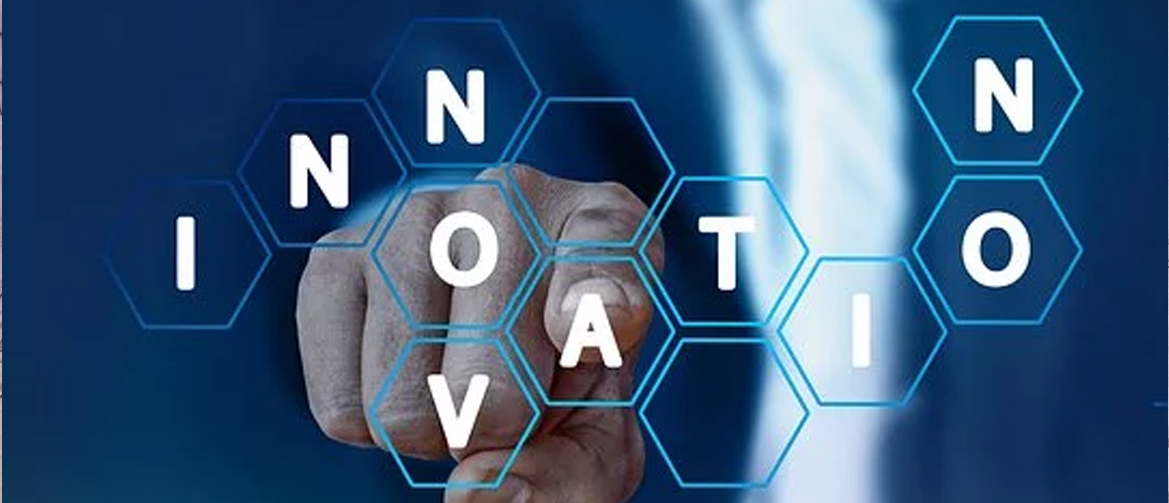So you want an #Innovation Hub?
During my recent travels for speaking engagements, meeting various startups, visiting a few accelerators and Innovation Hubs/Labs I gathered a lot of valuable insights about the reasons why they were all investing in these “labs”. Here’s a couple of them:
- Rapid prototyping
- Changing the culture of the organization
- Idea Incubator
- Identifying startups to invest in
- Embed Design Thinking
- Customer Engagement
- Be known as an innovative and future thinking entity (PR)
- Controlled environment for experimentation
- Building 'value' for customers
I am sure you can come up with your individual reason for investing in the “labs”. Given all the investments that are driven by a pure intent (I’ll give the benefit of doubt to all), what are the opportunities? How can one maximize customer outcomes at scale? In my view, it goes back to the basics - “Plan your work and work your plan!” To have a plan you need vision, strategy, and core customer objectives. Some banks have become pretty good at proactively identifying which technologies are good to experiment with and have been pretty current with the times. Most of them are great at following the industry buzz and creating their own as a result. The challenge is that very few, as a result, have been able to be effective in delivering true customer value at scale.
The other big opportunity is regulation that requires harmonization, not just within a region, but cross-region so there is positive change happening at a pace to make the best of the new Fintech business models. At present this is, unfortunately, being done for competitive reasons rather than a desire to keep up with a regulatory best practices to protect consumers. But given how quickly Fintech is evolving, there will be inevitable problems and bad apples, which risk painting the industry poorly, and making some regulators withdraw or tighten a previously more open attitude to Fintech innovation as their experience deepens. Fintech leaders with real, solid industry experience should be thinking proactively about how we as a global community could help develop knowledge of and promote the implementation of safety nets in each jurisdiction.
From a government's point of view, we are in a strange place globally! On the one hand, there is a massive proliferation of technology and ideas being tested, created and deployed with consumers and businesses - however, arguably most national legal codes have completely failed to keep up (think of the requirement of wet signatures on contracts - for customers with a basic relationship with banks, wet signatures are only used if someone writes a cheque. Having said that, many customers don't use a checkbook anymore, but the same requirement applies to everyone) and as a result, it is stifling innovation across a broad range of sectors including finance. Some of the new upcoming “Digital” only banks have created an improved process that cater to the changing customer behavior but it is extremely hard to make such small changes in large banks.
So what else should the government focus on? My view is that reforming existing laws to reflect the digital world would help the finance industry, as well as many others. The FCA (and other equivalents non-UK regulatory bodies) has taken a good approach with its sandbox and I'd argue there needs to be more of these types of hubs. Hong Kong, Singapore, Australia, Canada, and a few others are also doing a lot in this space. Blockchain tech is also very relevant for governments, both in helping to regulate its use but also to feed in the requirements and standards. It could also help create common global standards that are largely absent from many industries and countries. Without standards there are way too many bespoke implementations that will not talk to each other.
It is also very important to have a well-defined success criterion when you embark on the “labs” journey. Without clear success criteria, not only will the outcome continue to surprise you, it’ll continue to grow in its need for more funds and the moment things get tough, the “lab” will be the first to be a candidate to shut down. In addition to clear success criteria, it's extremely important to have a strategy for creating an ecosystem that’ll fuel the right customer 'value'. There is also a need to try and minimize the duplication of activity. During my visits across many of the hubs (Dubai, Australia, UK, USA, and a few others) it was evident that a lot of them are solving similar (if not the exact same) problems and building digital solutions for them. The good news is that each of these labs recognized the “right” problem but unfortunately, each of them invested independently of each other to solve for it without cross country collaboration.
While people will define success based on who’s the sponsor - bank, government, telco, etc - the biggest thing is being clear about what 'value' you are adding to the ecosystem. Is it growing entrepreneurs by matching them to mentors or investors or bringing innovation into the organization? It’s not just “build it and they will come” - its more about creating the right compelling 'experience that will generate pull from the consumers.
Irrespective of who has set up the hub, the other common non-negotiable element would be open collaboration from a diverse set of stakeholders, principally the sponsor, governments, VCs, financial institutions, technology partners, regulators, and corporates. Ultimately a hub starts to form because there is relatively easy access to companies/institutions that would traditionally be very hard to access. Furthermore, facilities in regards to the workspace are important as is creating a 'buzz', typically through events, hackathons, etc.; it should feel welcoming, useful and educational for fin-techs, and for others, the hub should be recognized as a center for experimentation and R&D. The challenge is to make it functional as opposed to just a shiny looking open space with people floating around in casuals around the coffee machines!
The hub has to have sufficient buy-in from the sponsor. If a team within the sponsor's organization is doing this without broad internal engagement it will be hard to take the rest of the organization on the journey once it has been established. Do not expect immediate results; it's very unlikely that you will get it the right first time so prepare to have sufficient flexibility to pivot and find its place within the macro and micro-ecosystems. Remember, there will be many people telling you that this is a big mistake and you are wasting money. Also, hubs that have a focus on industry or purpose tend to get better results: if the focus is just innovation for the sake of having a bunch of colleagues badged as “the cool kids”, be prepared for a lot of things to go wrong! If, however, it is centered around a specific purpose or tech, you can then start to become a center of excellence for certain disciplines and easily engender a sense of shared beliefs and goals.
It is hard enough to instill a culture of transparency and open collaboration across a large organization: one needs to account for how they will ensure this “lab” will be part of the larger ecosystem rather than an isolated setup that is great for PR, creating a buzz...but when it comes to integrating, colleagues don’t contribute towards its success.
You May Also Like

Install These Free Security Tools Now!
Have you heard of intrusion detection systems? Also known as IDS, this software is often used to det...

Crowdfunding drives unprecedented efficiency
Crowdfunding has become the center of attention in the field of financing. It is also an increasingl...

Everything As a Service
Transition from Capex economy to Opex Economy World is in a transition from Macro to Micro. Granula...

IoT in Malaysia – 2019 Predictions
The year 2014 is when Malaysians started to Google the term “IoT” and ever since, the hy...

The business case for 5G
As of 2018 ,33 MNOs have been involved in 5G trials within Asia Pacific, accounting for 44% of 77 tr...

A New Face On Digital Transformation: Engagement Innovation
Whether we believe it or not we are in the fourth industrial revolution – The Digital Revoluti...

Technology & Competitive Data Analysis More Money – More Competition; everyone wins
Technology & Competition – More Money, Better Deal for Consumers & Companies – H...

Anatomy of Fintechs that’s redefining Financial services business models.
On a weekend in 2013 during monsoon I invited my friend and his family for a dinner at my place. It ...

Blockchain Taxation
World has paid a heavy price for trust, transparency, controls and accountability. Globally there i...

Why Is CDR / CDNR So Important?
Addressing the Fundamental Deficiency in Today’s Mainstream Cyber Security Strategies From Det...

CIO Business leadership - shifting from tech to business leadership
CIOs are no longer technocrats, they are business enablers and crucial part of organisation. CIOs sh...

Ideas and Opinions | 5G as an Enabler of Smart Cities
When 5G comes to mind these days, we think of “is this REALLY it?” and “have we re...

Lessons in Machine Learning
More organizations are using machine learning for competitive reasons, but their results are mixed. ...

Digital Indoor System: Critical Infrastructure for Digital Economic Transformation
Digital Indoor System: Critical Infrastructure for Digital Economic Transformation Developme...

The Changing DNA of the CIO CIO as Business Enabler
The idea that the role of the CIO has now gone beyond technology and innovation related issues, and ...

Today's Digital Miners
Today's Digital Miners I guess by now everyone of us who have read an article or two on digital...

Digital Transformation Readiness Test for Banks
Digital Transformation Readiness Test for Banks The questions banks need to try to answer to test ...

What is Machine Learning
What is Machine Learning? According to Tom Mitchell, a professor at Carnegie Mellon University has d...

Transformation of industry verticals through 5G – Focus and Look Indoors
Transformation of industry verticals through 5G – Focus and Look Indoors Now that 5G is...

Humanize Technology - back to the basics of serving human needs, humanly
Humanize Technology - back to the basics of serving human needs, humanly The subjects of Digital Tr...

Creating the foundation for Sustainable Innovation
Creating the foundation for Sustainable Innovation In 2011, Marc Andreessen famously proclaimed tha...

About Tech Data Diversity And Inclusion
About Tech Data Diversity And Inclusion I am excited about attending the Hispanic IT Executive Coun...

Digital Transformation: Customer Centricity & Intimacy
Digital Transformation: Customer Centricity & Intimacy It was inspiring listening to IMD Profess...

Is Industry 5.0 putting humans back in the center
Industry 4.0 focused on the machines. Is Industry 5.0 putting humans back in the center? I was on a...

Importance of IT Resilience
Importance of IT Resilience Disclaimer: The posting written here is solely of my own comment and ...

Implementing a SaaS Solution – The 3 Major Technical Challenges
So when are you planning to implement a SaaS (Software as a Service) solution? Very soon, if not alr...

The Unsung Hero; The Data Scientist
It is quite likely you are wondering ‘what on earth’ am I on - for cooking up such a tit...

How POC projects made me a better Project Manager
How did I get here? Project Management is a tough job. We need to keep a track on budgets, timeline...

How Data and AI can help in COVID-19 crisis
Since the first report of coronavirus (COVID-19) in Wuhan, China, it has spread to at least 100 othe...

Building thriving business partnerships with Open API
Apple and Google recently collaborated to assist in enabling contact tracing and reducing the spread...

The Future of Indoors with Digital Indoor Systems
Digital Transformation, 5G, and COVID-19 have triggered further growth in indoor traffic Digital tr...

Seizing Opportunities in the ICT Sector
The Increased Pace of Digital Transformation Automation, digitalisation, artificial intelligence (A...

CoVID19, Digital, ML
CoVid19 hit us and has now created the “new Normal” in terms WFH, Video conferences, bal...

Do we really need CEOs, CFOs, and CIOs?
Why CMOs and CTOs are all you need to succeed in today's world This is my first article in a se...

Cinématographe by the Lumière Brothers & History of AI
The Lumière brothers, Auguste and Louis, French inventors and the pioneer manufacturers...

Avenues To Expedite The Incorporation Of 5G Into Industry
5G has been launched in Asia Pacific. South Korea, China, the Philippines and other countries have b...

4G/5G Fixed Wireless Access: A Critical Revenue Growth Engine
In studying key success factors of solutions, it can almost always be shown that the underlying conc...

Big Data Machine Learning IoT and PI
In the era of the Internet of Things (IoT), an enormous amount of sensing devices collect and genera...

Asia’s Plan To Leverage 5G Is Missing A Regional Strategy
The day the world’s first commercial 5G services promised a “great leap” is still ...

Learning from #COVID19…Would remote working be the new normal?
Musings of a Technology Evangelist In the past few months, we have all learnt many new terms&hellip...

Principles of Sustainable Cybersecurity
In past few years the annual rate of cybersecurity breaches has almost been doubled, and as a result...

Data Governance a key element for Digital Transformation
For the last few years, corporate environment, used to speak and hear lots of financial/management t...

Seven Traits of a Millennial CEO
With a staff strength and annual turnover in the order of billions and trillions respectively, Chris...

What is a Pass Key and Is Now the Time To Adopt Them?
What is a Pass Key and Is Now the Time To Adopt Them? There has been recent news about a mass...








Shailesh Grover
Chief Digital and Innovation Officer, Hong Leong Bank Berhad
Shailesh Grover serves as Chief Digital and Innovation Officer at Hong Leong Bank Berhad, based in Malaysia. At Hong Leong Bank, he is responsible for coordinating the strategic execution of the bank’s digital transformational agenda, driving innovation as well as industry-leading digital capabilities across the Bank’s businesses and countries. Prior to joining Hong Leong Bank, Grover was with Capco, Barclays, and AT&T. He has over 25 years of international experience working across multiple industries. Grover is passionate about building new ventures that leverage the rapidly evolving technology landscape and cater to changing customer behaviors and expectations. He constantly seeks to create and instill a culture of creativity, agility, design, and innovation.